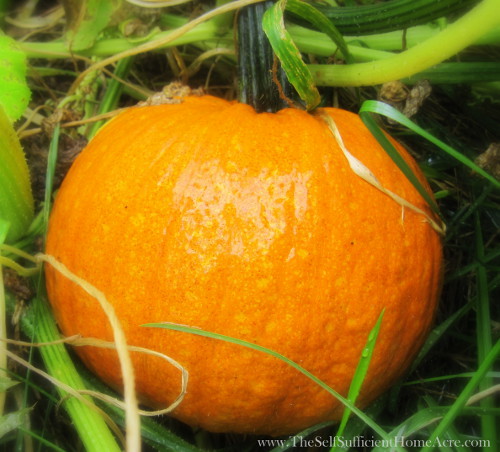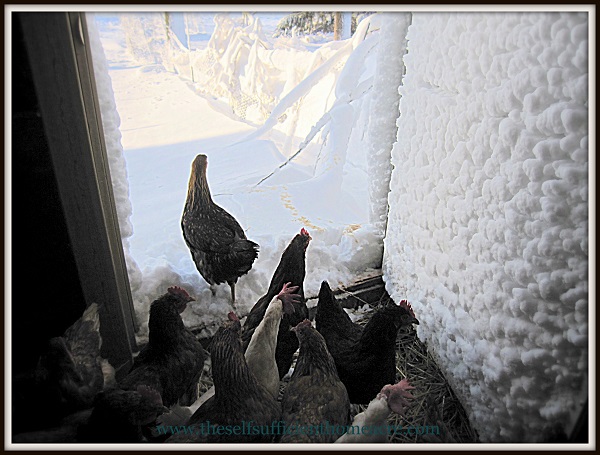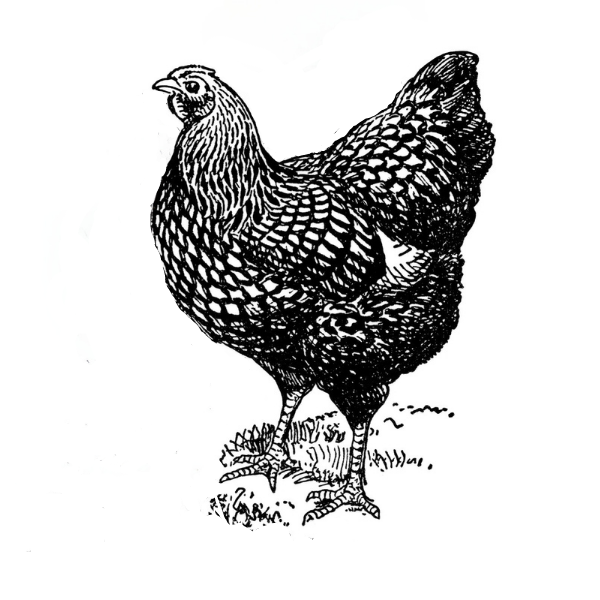How to Feed Pumpkins to Chickens & Other Poultry
Chickens love to peck at vegetables, fruits, herbs, and flowers to supply a variety of nutrients to their diet. Pumpkins and winter squash are an autumn favorite for backyard chickens… and for good reason. I feed pumpkins to chickens because these fleshy fruits are rich in Vitamin A, potassium, calcium, niacin, magnesium, iron, and beta-carotene. Plus, the abundance of beta-carotene gives egg yolks a deep orange color and delicious flavor. This fall, do your flock a favor and give them pumpkins for a tasty treat and a great nutritional boost!
This post contains affiliate links or advertisements as a means for this website to earn income. As an Amazon, LLC affiliate, I earn a commission on qualified purchases made through these links.
Maybe you’re still wondering why you should try feeding pumpkins to your chickens. Of course, this is purely a personal choice but there are some good reasons to try it.
- Provides a tasty, nutritious treat for your chickens
- Recycles a pumpkin that might be sent to a landfill
- Boosts the nutrient content, flavor, and color of egg yolks
- Gives your chickens a fun activity to decrease boredom and stress
- Free or low-cost way to supplement chicken feed
You can often pick up pumpkins for free (or almost free) after Halloween or you can grow your own pumpkins and winter squash as a source of winter nutrients for your flock.
Check out my post 25 of the Best Ways to Use Leftover Pumpkins
Pumpkin As a Natural Dewormer?
Many websites recommend feeding pumpkin or pumpkin seeds as a natural treatment for deworming your chickens. Although I am all about doing things as naturally and inexpensively as possible, I can’t find any documentation that supports these claims through research. I have found the following article sharing research that does NOT support these claims of deworming properties. However, I do think that feeding pumpkins supports a healthy immune system so that chickens are better able to survive illness and disease. Having said that, here is a product that works well as a preventative, The Poultry Store Natural Dewormer for Chickens (#ad)… one great thing about this product is that you can still eat the eggs while you treat your flock!
Storage Tip: Pumpkins and winter squash may be stored in a root cellar or cool area between 50 and 55 degrees Fahrenheit. Most pumpkins must be used within a month or so but many varieties of winter squash will store for several months. Find out how to store pumpkins and winter squash in fall as a source of food for your family and farm animals. You may also preserve pumpkins and squash by freezing or canning them.

How to Get Your Chickens to Eat Their Pumpkin & Squash
Adding pumpkin or winter squash to your flock’s diet isn’t difficult… In fact, it can be as easy as tossing a whole pumpkin into their pen! Sometimes you don’t want to feed an entire pumpkin to your chickens or you might have hens that aren’t very interested in pecking at this unusual treat. Read on for a variety of ways to introduce pumpkin or winter squash to your laying hens’ diet.
If your laying hens don’t seem particularly interested in eating a whole pumpkin, you may have to pique their interest by preparing it for them. Usually, chopping a pumpkin or squash in half is enough to get your chickens to start eating!
Here are some ways to give the nutritional benefit of pumpkins to your picky flock members:
- Give them the cut-out pieces, seeds & ‘guts’ left over from carving a jack-o-lantern
- Mix a few sunflower seeds or some scratch grains into the pumpkin guts
- Cut a pumpkin or squash in half and bake it until tender, and cool, then feed to your flock
- Cook a pumpkin and allow it to cool, then scoop the flesh out, mash, and feed in small amounts
- Add mashed pumpkin or squash to feed
- Mix mashed pumpkin with plain, unsweetened yogurt and feed one or two tablespoons/hen/day
- Feed whole or chopped pumpkin and squash seeds
- Add mashed pumpkin or squash to cooked oats for a treat
- Sprinkle a few mealworms over a pumpkin half or mix them into the pumpkin
- Make homemade dog biscuits for Fido, and crumble some up for your hens!
- Freeze containers of cooked pumpkin and feed to your flock in summer to beat the heat
Can You Feed a Jack-O-Lantern to Your Chickens?
You might be wondering if it’s safe to feed your carved pumpkin to the flock. Good question! It is safe to feed a carved pumpkin to your flock as long as it isn’t moldy or rotten. If there is a small amount of mold on the interior of the pumpkin, you may be able to scrape this off and wipe the flesh down with vinegar to kill bacteria. Once you’ve done this, it’s safe to feed that old jack-o-lantern to your hens.
Even better, treat your newly carved pumpkin with vinegar by wiping down the entire pumpkin with a good amount of vinegar. Do this right away after carving and then treat the pumpkin this way every second or third day for a week or so to keep the flesh from rotting. This should keep your jack-o-lantern from going bad until Halloween is over and you can safely feed the left-over pumpkin to your flock. Try to carve your pumpkin just a few days before Halloween, for the best results.
Let Your Chickens Carve a Jack-O-Lantern for You!
Try something fun this year and get your flock to carve the pumpkin for you… no knife is needed!
- Draw your design on the pumpkin with a pencil
- Spread peanut butter where the flesh will be removed
- Sprinkle rolled oats or sunflower seeds on the peanut butter
- Place the pumpkin in your chicken pen
- Watch while your hens peck away at the design!
Grow your own pumpkins and winter squash to feed your flock! Check out Mary’s Heirloom Seeds… save money on your seeds and grow pumpkins for your flock next fall!
As an affiliate for Mary’s Heirloom Seeds, I earn a small commission from qualified sales however, you won’t pay any extra! Thanks for your support!






